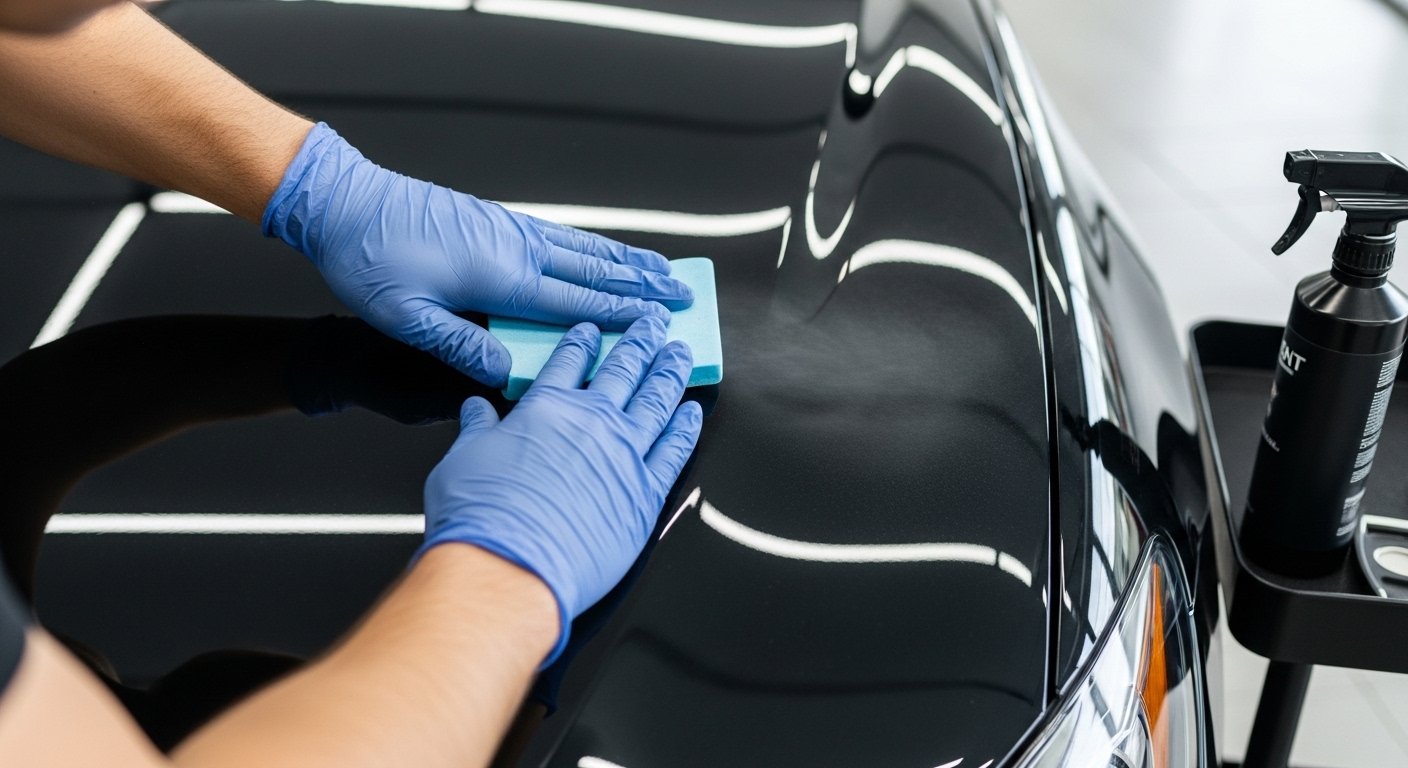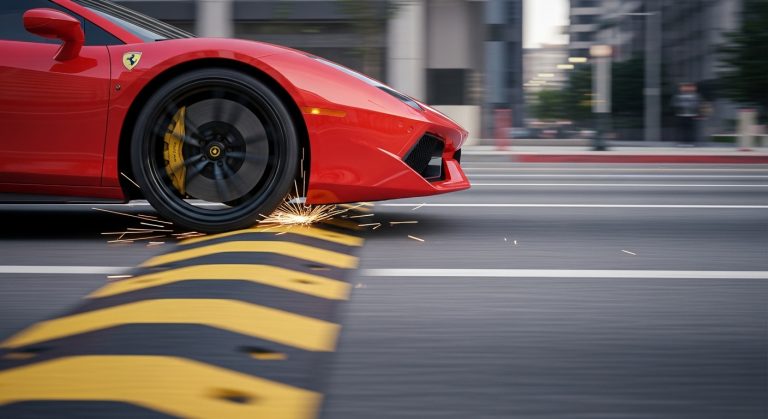You can clay bar a ceramic coated car, but you need to be cautious. Use an ultra-fine clay bar with plenty of lubricant and work gently on a cool surface to minimize abrasion.
Avoid frequent claying to protect the coating’s durability and hydrophobic qualities. Always wash thoroughly beforehand and test a small area first.
If your coating is heavily contaminated or aged, claying becomes more justified. There are also safer maintenance options worth considering for superior care.
Key Takeaways
- Clay bar use on ceramic coatings risks micro-scratches and gradual coating degradation if done frequently or improperly.
- Light claying is acceptable once or twice yearly to remove embedded contaminants when chemical decontamination fails.
- Use ultra-fine clay bars with plenty of lubricant, gentle pressure, and work on cool, shaded surfaces to minimize damage.
- Thoroughly wash and decontaminate before claying, limiting frequency to preserve the coating’s hydrophobic and protective properties.
- Alternative maintenance like regular washing, ceramic boosters, and sealants often reduces the need for clay bar treatment.
Effects of Clay Bars on Ceramic Coatings
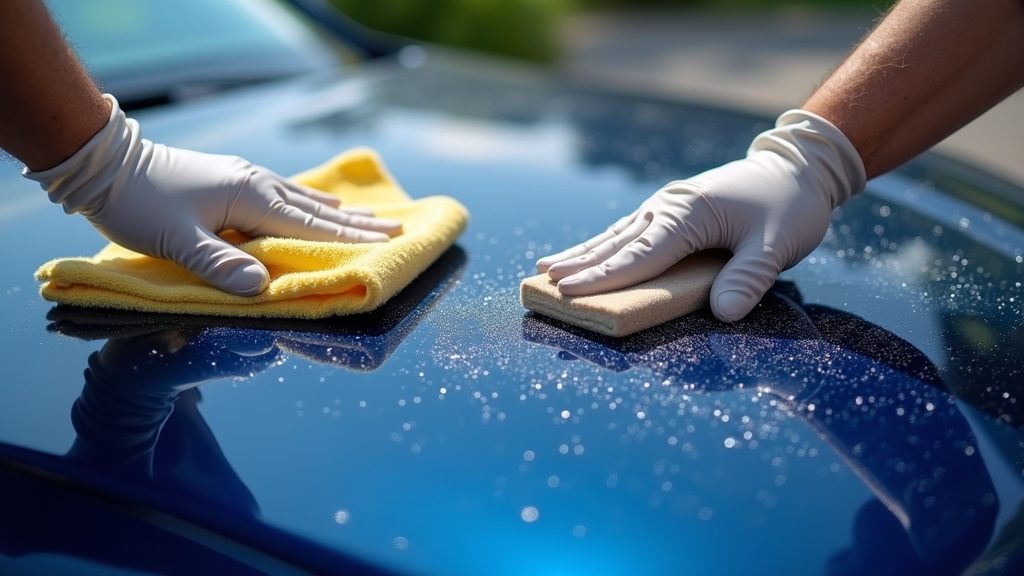
Although clay bars effectively remove embedded contaminants, you should use them cautiously on ceramic-coated cars due to their abrasive nature. Clay bars can degrade the coating over time and induce swirl marks or micro-scratches, especially visible in sunlight.
Coarse or medium-grade bars increase surface marring risk, so fine-grade clay bars with liberal lubricant are safer but still require gentle pressure and careful technique. Regular maintenance including interior cleaning can help preserve vehicle surfaces and coatings.
Ceramic coatings’ hydrophobic properties reduce contaminant bonding, making claying generally unnecessary for routine maintenance. This is because regular washes remove most dirt without the need for claying, thanks to the coating’s high hydrophobicity.
Instead, you should rely on pH-neutral cleaners, iron fallout removers, and gentle washing to preserve coating integrity. If you do use a clay bar, be prepared for possible polishing afterward to correct minor surface damage and always consult the coating manufacturer’s guidelines to avoid compromising the protective layer.
When and Why Claying Might Be Considered?
When should you consider claying a ceramic-coated car despite the potential risks? You might opt for claying if your coating’s surface is heavily contaminated with embedded pollutants or industrial fallout affecting its appearance and hydrophobicity.
Light claying once or twice a year can remove bonded contaminants chemical cleaners don’t eliminate, restoring smoothness and gloss.
It’s essential before reapplying ceramic coatings or waxes to guarantee proper adhesion on a contaminant-free surface.
Claying becomes necessary when chemical decontamination fails to restore tactile smoothness or remove stubborn residues.
However, limit frequency to avoid abrasion that compromises coating integrity.
Use soft clay bars with lubricants and consider environmental factors like industrial fallout or sap buildup.
This cautious approach maintains your coating’s performance and extends its effective lifespan.
For optimal results, always perform pre-connection safety checks to ensure no damage occurs during maintenance.
Expert Opinions and Manufacturer Recommendations
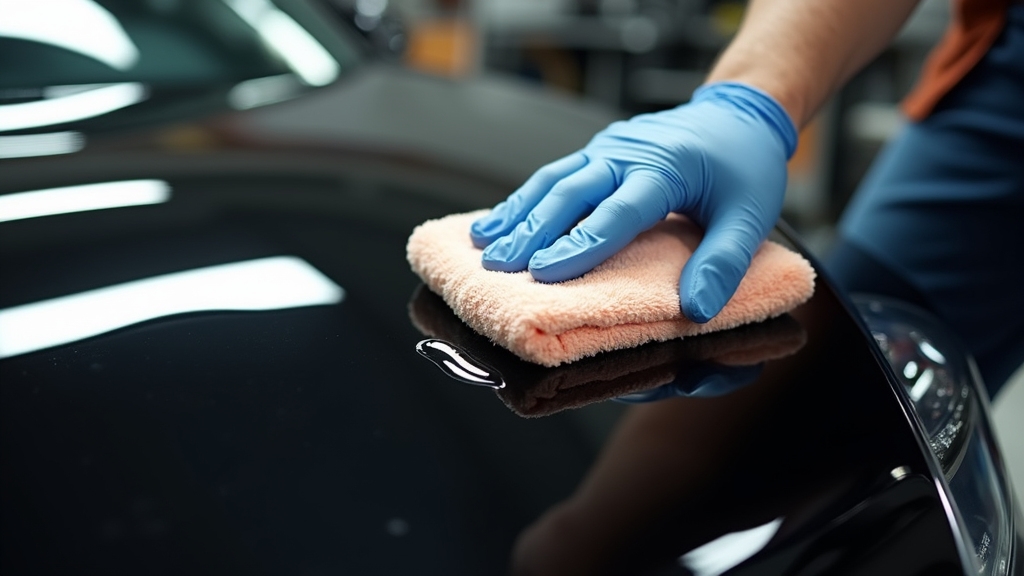
You might consider claying a ceramic-coated car only under specific conditions, but it’s important to weigh expert opinions and manufacturer recommendations carefully before proceeding. Most manufacturers warn that clay bars can cause micro-scratches and degrade the coating’s hydrophobic properties, advising to avoid abrasive mechanical processes after coating.
However, detailing experts acknowledge claying may be acceptable if the coating has aged considerably and contaminants bond strongly. It is also critical to ensure that proper surface preparation, including a strip wash and use of iron remover, is performed before any coating or maintenance procedure to maintain coating performance surface preparation.
Additionally, using products with proven high-performance formulations can enhance protection during maintenance.
Here’s what you should keep in mind:
- Use ultra-fine clay bars with high-quality lubricants and test in inconspicuous areas first.
- Limit claying frequency and follow immediately with a ceramic top-up or sealant.
- Prefer manufacturer-recommended chemical decontaminants or iron removers as safer alternatives.
Following these guidelines helps preserve your ceramic coating’s integrity while addressing stubborn contamination.
Safe Techniques for Using Clay Bars on Coated Surfaces
Since improper use of clay bars can damage ceramic coatings, you must apply safe techniques to protect the surface. Always use a high-quality clay lubricant liberally to minimize friction and prevent micro-scratches. It is important to avoid using clay bars unless they are approved by the manufacturer to prevent abrasive damage.
Work on a cool, shaded surface and address small sections at a time, applying only light pressure. Frequently fold the clay bar to expose clean areas and avoid rubbing contaminants into the coating. This careful approach helps prevent surface residue buildup that can cause issues with coatings.
Avoid claying over heavy dirt; wash thoroughly beforehand. After claying, rinse the surface to remove residual lubricant and debris using soft microfiber towels.
Limit claying frequency to every 3–6 months to preserve coating integrity. If minor imperfections occur, correct them with a polish designed for ceramic coatings.
Following these precise methods helps maintain your coating’s hydrophobic properties and longevity.
Alternative Methods for Maintaining Ceramic Coatings
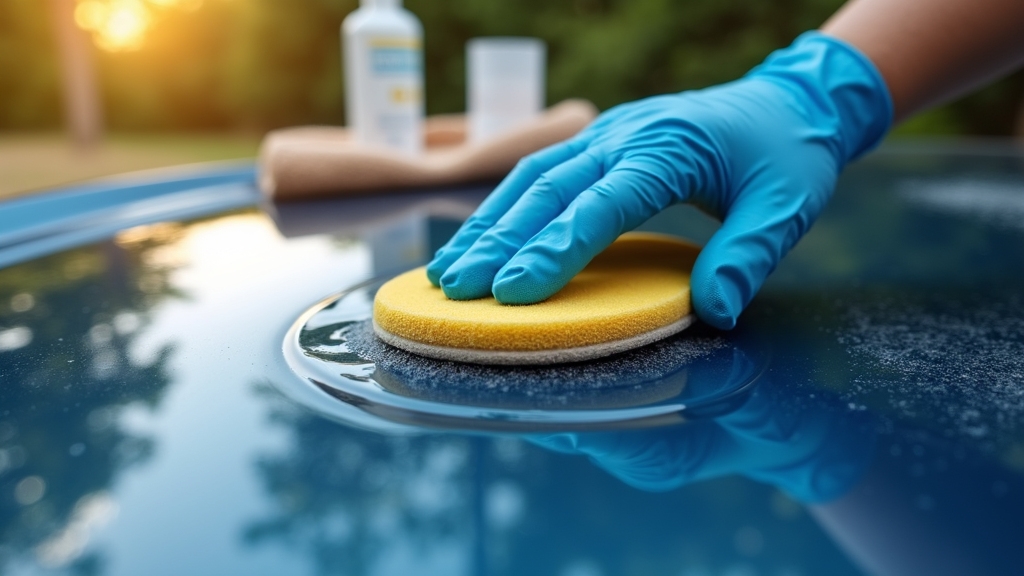
Although ceramic coatings provide robust protection, maintaining their performance requires more than just occasional claying. You need to adopt an exhaustive care routine to preserve the coating’s hydrophobic and protective properties effectively. Consider these alternative maintenance methods:
- Regular Washing: Use pH-neutral shampoos and the two-bucket method to eliminate contaminants without harming the coating. Avoid direct sunlight during washing and dry with microfiber towels to prevent water spots and scratches. Washing monthly can prevent dirt buildup and maintain the coating’s shine.
- Safe Cleaning Agents: Employ ceramic coating boosters and maintenance sprays to restore hydrophobicity. Use acid-based shampoos cautiously for mineral deposits and avoid harsh alkaline soaps. Using pH-neutral or specially formulated products preserves the coating’s hydrophobic properties.
- Avoid Harsh Washes: Steer clear of automatic car washes with abrasive brushes or harsh chemicals. Manual hand washing with gentle techniques significantly extends coating longevity and gloss. Proper tools and techniques help prevent stripping or damaging the protective layer.
Frequently Asked Questions
How Often Should I Replace My Clay Bar When Detailing a Ceramic-Coated Car?
You should replace your clay bar as soon as it becomes saturated with contaminants, feels rough during use, or shows visible damage like tears or deformation.
For ceramic-coated cars, using a fresh clay bar each time minimizes coating damage.
Frequency depends on contamination severity and clay bar size; heavy pollution requires more frequent replacement.
Always monitor its condition closely to maintain your coating’s integrity and avoid micro-scratches from reused, dirty clay.
Can Clay Bar Residue Affect the Appearance of a Ceramic Coating?
Clay bar residue can subtly undermine your ceramic coating’s brilliance by embedding contaminants that create a muted, less vibrant finish. If you don’t thoroughly remove this residue with the right lubricants and ceramic-safe cleaners, it can dull the coating’s clarity and diminish its hydrophobic properties.
To preserve your coating’s ideal appearance, guarantee meticulous rinsing and avoid harsh products that might exacerbate these effects. Maintaining that pristine, glossy surface you expect is essential.
Are Synthetic Clay Bars Better Than Traditional Ones for Coated Vehicles?
Yes, synthetic clay bars are generally better for coated vehicles. They’re less abrasive than traditional clay, reducing micro-scratches and swirl marks on your ceramic coating.
You’ll find them smoother, with longer usability and easier rinsing. However, you still need to use light pressure and plenty of lubrication to avoid damage.
Always check your coating manufacturer’s guidelines before claying to verify you maintain the coating’s integrity and longevity.
Does Claying Impact the Warranty of My Ceramic Coating?
Yes, claying can impact your ceramic coating warranty. Most manufacturers discourage or prohibit abrasive claying since it risks micro-scratches and coating breakdown.
If damage arises from claying, they may void your warranty, especially if corrective polishing is needed. Always check your coating’s specific warranty terms and follow manufacturer-recommended maintenance.
Using non-abrasive chemical cleaners and gentle washing methods helps preserve both your coating and warranty coverage.
Can Clay Bar Use Remove Water Spots or Mineral Deposits on Ceramic Coatings?
Yes, you can use a fine-grade clay bar to remove surface-level water spots and mineral deposits on ceramic coatings, but it’s not guaranteed to eliminate deeply etched spots.
Always apply ample lubrication to minimize abrasion and avoid damaging the coating. Be cautious, as aggressive claying may cause micro-scratches or swirl marks, potentially diminishing your coating’s protective properties.
For stubborn deposits, consider specialized chemical treatments or professional detailing instead.
Protect Your Ceramic Coating Investment
You can use a clay bar on a ceramic-coated car, but you must proceed with caution to avoid compromising the coating’s integrity. Think of the clay bar like fine sandpaper—effective at removing contaminants but potentially abrasive if misused.
Always follow manufacturer guidelines and use proper lubrication to minimize risk. When done correctly, claying can maintain a smooth surface, but consider alternative maintenance methods to preserve your ceramic coating’s durability and shine over time.

